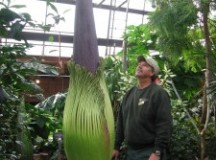Thank goodness for Costa Rica’s strict building codes.
They ensure that its buildings are extremely sturdy and well built. That helps account for the relatively small amount of damage the Central American country suffered after a powerful 7.6-magnitude earthquake last Wednesday.
The earthquake took place about 140 kms west of the country’s capital, San Jose.
In 1991, another 7.6-magnitude earthquake shook the country but it caused a lot of damage. This time, Costa Rica was saved by its new and updated building standards.








